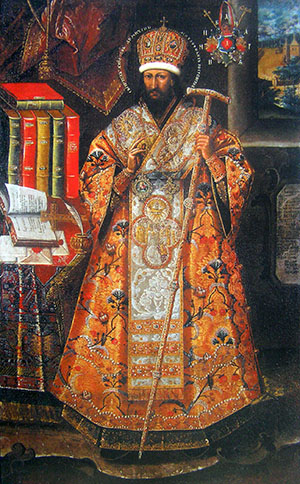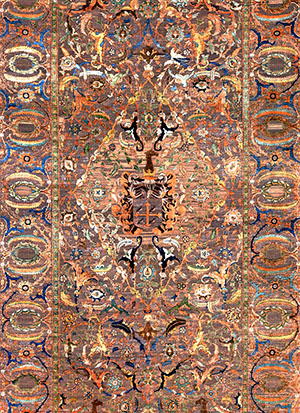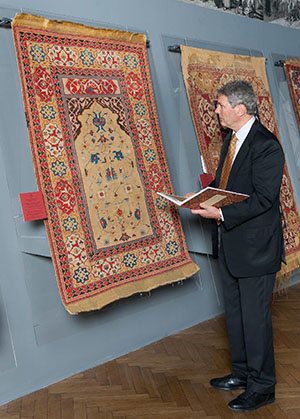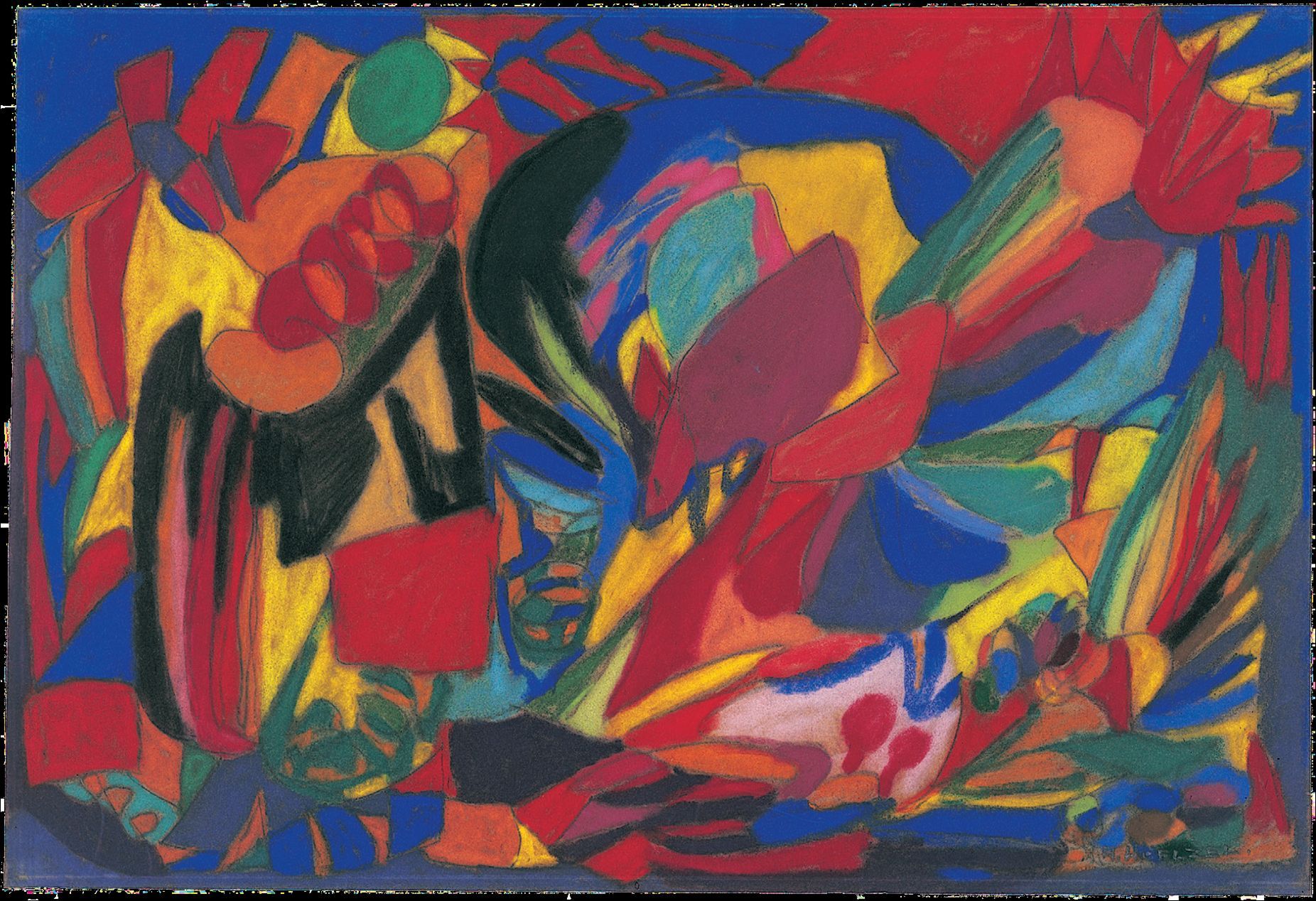 |
 |
 |
Workshop at KIT
Weaving as Technique and Metaphor.
Acculturation and Migration of Motifs in Early Modern Eastern Europe
Institut für Kunst und Baugeschichte/Lehrstuhl Jehle, Karlsruhe Institute of Technology (KIT)
Organizers: Dr. Halyna Kohut, Dr. Dr. Jesús Muñoz Morcillo
Date: June 16, Friday, 5.30 pm (CEST)
Zoom link: https://kit-lecture.zoom.us/j/62205355377
The workshop “Weaving as Technique and Metaphor: Acculturation and Migration of Motifs in Early Modern Eastern Europe” explores the intricate connections between weaving, cultural exchange, and migration. With a specific focus on Eastern Europe, the workshop investigates how weaving techniques and motifs have transcended geographical boundaries and influenced diverse cultures. Through a series of presentations, participants delve into the multifaceted roles of weaving as both a technical craft and a metaphorical expression. The workshop examines the historical and cultural significance of carpets, prayer rugs, and other woven artifacts, shedding light on their symbolic meanings, artistic influences, and the social contexts in which they were produced. By exploring the interplay between weaving traditions and the migration of motifs, this workshop offers a deeper understanding of the complexities and interconnectedness of Eastern European textile heritage.
Talks (c. 20 min.), Q&A (c. 10 min.)
| 5.30 - 5.45 | Salutation Halyna Kohut & Jesús Muñoz Morcillo |
| 5.45 - 6.15 | Hyphenated Provenience: Ruthenian, Ottoman, and Safavid Carpets and Their Owners Tomasz Grusiecki, Boise State University |
| 6.15 - 6.45 |
Architectural Motifs in ‘Transylvanian’ Prayer Rugs |
| 6.45 - 7.15 | Uncovering the Identity. The Islamic Carpet in the Eighteenth-century Portrait of St. Dmytrii Tuptalo Halyna Kohut, Ivan Franko National University of Lviv/Karslruhe Institute of Technology (KIT) |
| 7.15 - 7.30 | Final Discussion |
Abstracts
Hyphenated Provenience: Ruthenian, Ottoman, and Safavid Carpets
and Their Owners
Tomasz Grusiecki, Boise State University
Like many other early modern Europeans, the elites of Poland-Lithuania were avid collectors of carpets. In the sixteenth and seventeenth centuries, most of these objects were imported from the Ottoman Empire, some from Safavid Iran; fewer still were woven on looms in Ruthenia (today’s Ukraine and Belarus). In the eighteenth century, more looms were established in Polish-Lithuanian lands, creating a distinct visual idiom associated with local culture. But while early modern household inventories appear to have valued a certain geographic idea of an object through attention to formal appearance, equally important is where these objects were acquired or whether they were a gift; in other words, it was the owner’s personal connection to these objects that justified their inclusion in the collection. Although these carpets are often described as Persian or Turkish, they were also family heirlooms or happy finds. As such, they were associated with local customs rather than exoticism. Polish-Lithuanian nobility saw carpets (both those made locally and those imported from West Asia) as intimately connected with their ways of life, local yet transcultural, distinct yet entangled, familiar yet interconnected. This is not, however, how modern scholarship has seen them. Since the nineteenth century, when the study of carpets became a separate field, carpets were appreciated as “Oriental” decorative objects, valuable because of their creation in a particular place, especially Isfahan, Kashan, or Uşak. These assumptions are often derived from Eurocentric taste ideologies like the fixation on authenticity amongst Western consumers and collectors, nostalgia for the remote and exotic, using European high culture as a reference point, and creating a canon for “Islamic art,” in itself a contested term. This paper points to the futility of such “container culture” in art-historical scholarship. Evidence from archival and literary sources reveals that early modern carpet owners had a different concept of origins than the one inherited from nineteenth-century art history and museology. These sources foreground carpets’ transcultural contexts of production, distribution, and consumption, effectively challenging outdated assumptions which make us believe that cultural forms can be assigned to a single cultural region and its historical traditions.
Architectural Motifs in ‘Transylvanian’ Prayer Rugs
Stefano Ionescu, Transylvanian Rugs Studies, Rome
The Ottoman court prayer rugs are the most beautiful prayer rugs ever woven. They are based on designs elaborated by artists of the Nakkashane school for illuminating books and were probably woven in Cairo (hence the denomination of Cairene group) in supervised workshops. The design reflects a fusion between motifs borrowed from Roman/Byzantine and Islamic architecture and the saz style for vegetal ornaments. It is worth mentioning that the designers are not depicting reality; they follow an existing genre, part of the new style of court art in the 16th century. These rugs had a significant impact on Anatolian weavers and served as prototypes for 17th-century ‘Transylvanian’ rugs. Later on, these became the most common model for Anatolian village rugs.
Uncovering the Identity. The Islamic Carpet in the Eighteenth-century Portrait of St. Dmytrii Tuptalo
Halyna Kohut, Ivan Franko National University of Lviv/Karlsruhe Institute of Technology (KIT)
My proposal concerns the depiction of an Islamic prayer carpet in an eighteenth-century portrait of St. Dmytrii Tuptalo, an Orthodox Christian saint of Cossack origin who was active in the Cossack Hetmanate and later in Muscovy, where he passed away in 1709. In 1757, the Russian imperial authorities canonized Tuptalo, and it was around this time that portraits of him featuring an Islamic prayer carpet began to appear. The presence of this seemingly foreign detail raises intriguing questions: where does the carpet come from, and what is its significance in Tuptalo’s portraits? To answer these questions, my essay will analyze the changing meaning of the carpet’s depiction in relation to the fluid identities of the Cossack elite within the dynamic political context of the long eighteenth century.
